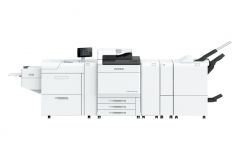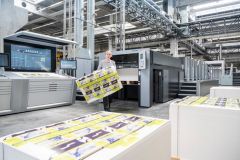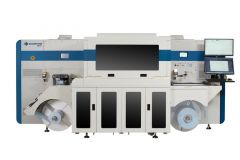Shaun Holdom, Director of International Business Development at Fujifilm WFIJ Systems, explains how Fujifilm's new AQUAFUZE ink technology represents a major breakthrough for the industry.
ink is the lifeblood of our industry,"595"eco"801"sustainability" he says. And despite the enormous advances made in materials technology in recent years, it's often the discoveries made in the laboratories of leading ink manufacturers that drive the whole sector.
These advances occur on a small scale every day. Sometimes, one of them turns out to be a real revolution that forces us to rethink our technology. I think we're currently experiencing one of these moments. A moment comparable to the one we experienced in the 1990s and early 2000s, when screen printing, a widespread technology, went into irreversible decline with the rapid development of UV, eco-solvent and latex ink technologies.
From solvent inks to UV: 25 years of technical change
In 1997, I was personally involved in the development of a novel solvent-based ink, designed to be sprayed by an Epson piezoelectric printhead. It was a real revolution in ink technology: it was now possible to print digitally on PVC. This profoundly transformed the market, and led to the emergence of new business sectors that still exist today. Printers equipped with this technology became more and more voluminous, paving the way for large-format printing. Some of the pioneering companies involved (Vutek, Scitex, Nur, Idanit and Salsa) were subsequently acquired by HP, when the latter in turn set out to conquer the market.
In 1999, Fujifilm was the first company to embark on the development of UV inkjet printing. This was the beginning of direct-to-substrate printing, with ultra-fast drying and the ability to print on a wide range of plastic substrates. These advantages, combined with exceptional durability, explain why UV ink technology became so popular on the market, rapidly dethroning competing technologies and becoming the industry standard even today.











